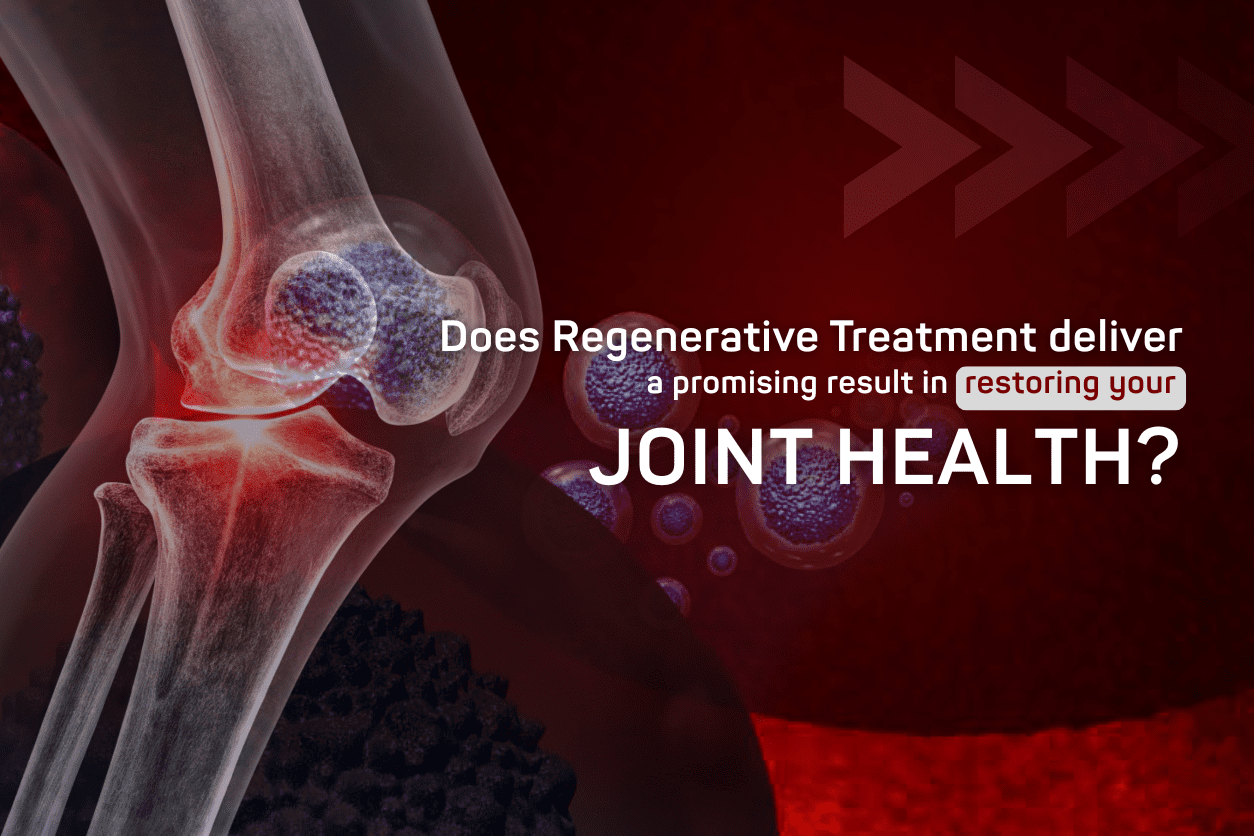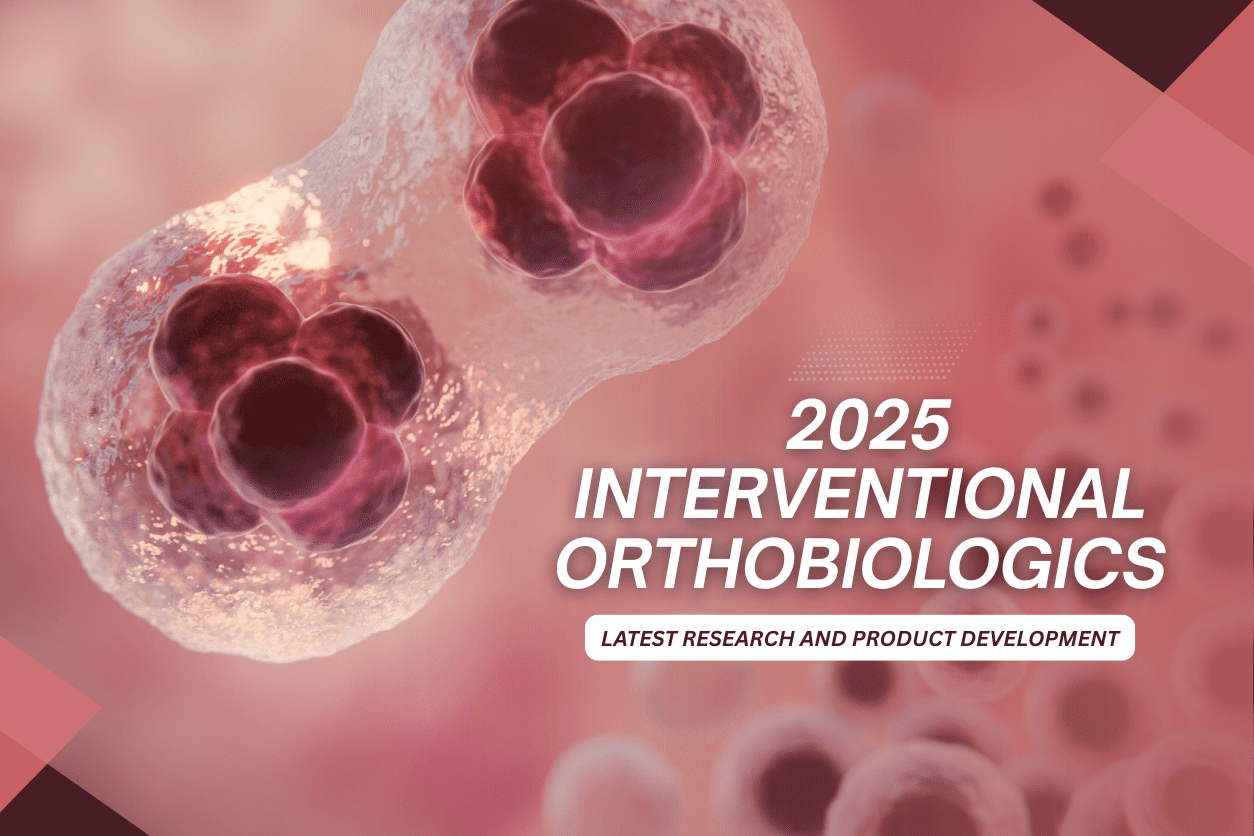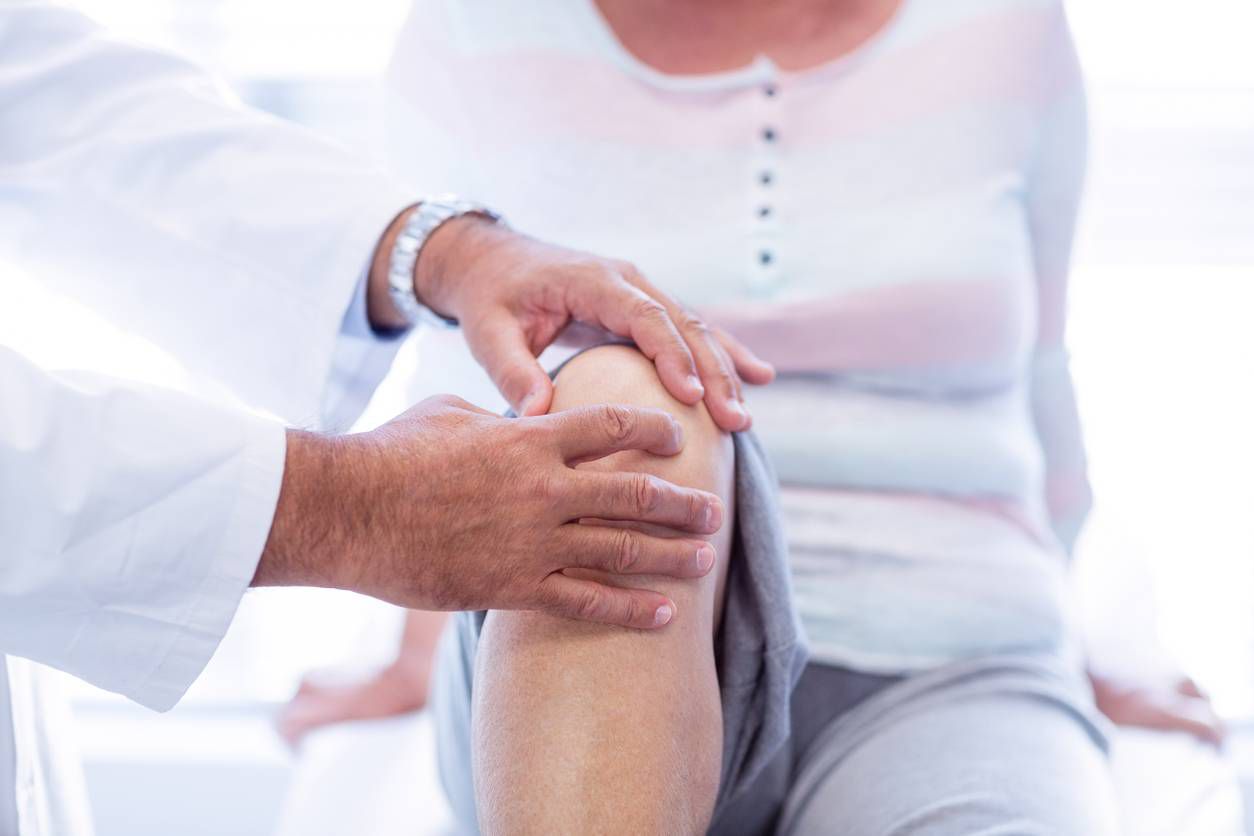
Joint health is a major characteristic of mobility as well as overall quality of life. From cradle to grave, accidents...

Joint health is a major characteristic of mobility as well as overall quality of life. From cradle to grave, accidents and injuries often leave our joints worse off. In the absence of accidents, wear and tear can cause arthritis.
When young and fit people frequently get well from injuries with conventional treatments, aging bodies do not respond. Tendons, cartilage, and ligaments, have restricted regenerative capacity, which fades further with age. When the body can’t restore itself, we opt for joint replacement surgeries that are accompanied with pain and other medical risks. Thus, the conventional treatment seems to be a difficult choice by putting your health under risk with surgery or suffer restricted mobility.
Regenerative medicine is a growing field that aims to protect joints rather than replace them. Using orthobiologics, we equip the body with the regenerative cells, needed to heal without surgery. This seems to be an ideal solution, potentially delaying the need for joint replacements. At the same time, it eases the burden on transplant waiting lists as well. However, the adoption of regenerative medicine into national guidelines is still a topic of debate.
Case studies and anecdotal proof often support orthobiologics which are biological substances that help the body heal naturallt. However, the current studies vary in size, creating a challenge for universal acceptance. There is considerable evidence supporting regenerative treatment for specific conditions like osteoarthritis and Tendinopathy. Still, a more extensive proof is required for these therapies to become a standard practice. Some meta-analyses have provided only minor effects for treatments like platelet-rich plasma (PRP), recommending against their utility as conservative treatments.
The concept of regenerative medicine is not new. Ancient Greek mythology, with the tale of Prometheus, hints at an early understanding of the body’s regenerative abilities. Dated back to 500 BC, the first known “regenerative” procedure was performed where Roman soldiers’ joint dislocations were treated with hot needle therapy.
Advancements began in the 1940s with Magnuson’s treatment for osteoarthritis via extensive knee debridement. The consequent therapies included microfracturing cartilage (Steadman, 1984), joint irritation with saline injections (prolotherapy by Hackett et al., 1956), and drilling into arthritic cartilage (Pridie, 1959). More recent advancements focus on cell implantation to stimulate healing in musculoskeletal structures, introducing interventions like PRP, mesenchymal stem cell treatment (MSCs), and biomaterial injections.
Despite its promise, regenerative medicine struggles to find a place in standard practice and large healthcare organizations, largely due to debates over the adequacy of its evidence base. PRP treatment and adipose-derived stem cell treatment require patients to pay out-of-pocket, since insurance firms typically do not cover these treatments. However, more practitioners utilise regenerative medicine for knee osteoarthritis and tendinopathy.
Orthobiologics are gradually more popular, especially due to media coverage of famous athletes like Steph Curry, Tiger Woods, and Rafael Nadal using these treatments. The procedures used for injury recovery and post-surgical healing, include:
Orthobiologics are considered conservative treatments, which are used as less invasive alternatives to surgery or when other procedures fail.
Orthobiologics proves to manage degenerative diseases of the knee and other chronic inflammatory conditions [1]. Research findings indicate that regenerative medicine for knee osteoarthritis including MSCs and PRP are safe, well-tolerated, and effective with frequent administrations and increased concentrations leading to improvements in patient outcomes. PRP treatment proves to be more effective for patients with early-stage knee osteoarthritis (KOA Kellgren-Lawrence grade I-II), while MSCs are extensively effective for those with mid-stage KOA (grade II-III). Furthermore, MSC trials have found reduced cartilage loss without adverse side effects [2].
Regenerative medicine is likely to delay or reduce the need for surgical interventions in patients with degenerative joint conditions and musculoskeletal injuries. In future, orthobiologics could serve as a middle-ground therapy for conditions like arthritis, positioned between conservative procedures and surgery. Hence, there will be a shift from metal and ceramic joint replacements to biological replacements and regeneration.
Several challenges remain before orthobiologics can become a standard treatment. These include scientific and political controversies, mainly around stem cell research, and the requirement for a more solid proof. On top of that, improving available treatments’, improvement of symptoms, long-term effect, and safety are essential. Additional challenges include storing stem cells, swiftly growing cells for grafting and preparing the musculoskeletal system for tissue regeneration.
Regenerative treatment is an exciting field that could manage or even cure conditions that current therapies cannot address. Although we are not at a point where orthobiologics can completely replace conventional treatments, the regenerative medicine field is expected to grow and advance considerably in the coming decade.

Joint health is a major characteristic of mobility as well as overall quality of life. From cradle to grave, accidents...

Interventional orthobiologics research has been progressing rapidly, with numerous studies and product pipelines poised to potentially..

Musculoskeletal (MSK) conditions such as tendonitis, osteoarthritis, and ligament injuries affect millions globally, impairing mobility and quality of life. In...

We are thrilled to announce the expansion of our services at Medica Stem Cells in Beacon Court, Sandyford, Dublin! ...

Living with chronic knee osteoarthritis and joint pain can be debilitating, affecting daily activities and overall quality of life. The...

Regenerative medicine, specifically platelet-rich plasma (PRP) treatment, is gaining recognition in orthopedic surgery and sports medicine for its ability to...

The Arthritis Foundation* estimates that approximately 31 million people suffer from osteoarthritis, the wear-and-tear form of arthritis. Osteoarthritis is the...

Knee pain is a frequently reported problem in adults, primarily linked to the natural deterioration caused by everyday movements such...

It’s time to change Nearly 126 million people worldwide have suffered pain for the past three months. Among them, 40...

Conditions or ailments ranging from hair loss to arthritis are successfully managed by conventional treatments such as medications, physical therapy...

The Centers for Disease Control and Prevention (CDC) added muscle/joint pain to its list of COVID-19 symptoms in April 2020....

The knee joint includes bones, ligaments, tendons, cartilage, and bursal sac. Hence, it is considered the most complex joint of...

Currently, researchers consider stem cells as the possible answer to many medical conditions, especially osteoarthritis. Their hope is that stem cell treatment can...

Thumb osteoarthritis is a deteriorating condition, so many people are forced to opt for thumb joint replacement. However, many people...

What is shoulder impingement? The main cause of shoulder impingement is shoulder pain. When you lift the arm above the...

Regenerative therapy is a branch of medicine that helps repair, restore and regenerate damaged or injured cells to rebuild impaired...

Commonly, most people will experience some kind of arthritis in their lifetime. Here you can find much information about arthritis,...

So, you have decided to opt for regenerative treatment towards permanent pain relief. Taking that decision is a good start, but by...

Do you get a crunching sound while climbing the stairs? Are you experiencing chronic knee pain and swelling? Do you...

Intravenous injection of bone marrow derived stem cells (MSCs) in patients with spinal cord injuries led to significant improvement in...

There was a time when the physicians used to recommend NSAIDs (Non-Steroidal Anti-Inflammatory Drugs), especially aspirin to reduce the risk...

Walk a pain-free mile! – Opt for our custom orthotic programme Non-invasive, holistic interventions such as physiotherapy, orthotic prescription can enhance...

Have you been treating your hip pain with NSAIDs and steroids for a long time? You might have got only...

Does your foot or ankle pain keeps haunting you every now and then? Are you unable to do your regular...

Jumper’s knee or patellar tendonitis is typically an overuse injury which is very common in runners. It is best to...

Restore your flawless radiance with PRP therapy. The growth factor present in PRP injections stimulates collagen and elastin production. The newly...

Osteoarthritis is the most common type of arthritis. And there is no cure for Osteoarthritis with conventional Osteoarthritis treatment methods....

Unfortunately, a rotator cuff injury is common mostly leading to a rotator cuff tear or a torn rotator cuff altogether....

Stem Cells are undifferentiated cells, and when required, they can differentiate into any specific type of cell. They are specialised...

Start running again with Regenerative Treatment for Runner’s knee The Knee joint is one of the most important and strongest...

Holiday is a time for fun in the sun! But injuries can occur while you are enjoying the warmer sunny...

The overuse of elbow joints usually causes either injury to the medial epicondyle or the inner side of the elbow...

Shoulder joint, being one of the most mobile joints of the body, facilitates mobility of the upper extremity. It is...

The best time for Regenerative Cell Treatment is now. Why wait? It will only prolong your pain. Have you been...

Have you been recommended to undergo knee or hip replacement surgery? Do you suffer with painful joints or arthritis? Have...

What is Osteoarthritis? Five million people in the UK are said to live with Osteoarthritis, also known as degenerative arthritis...

What is Plantar Fasciitis? Plantar fasciitis is a painful and debilitating condition. It primarily affects athletes, people whose jobs require...

Stem Cell therapy has evolved over the years to become a viable alternative treatment for people suffering from Osteoarthritis, joint...

Sports injuries can side line you from your favourite activities – and many traditional treatments can keep you out of...

When you’re suffering from pain or injury, there are many ways to begin your relief and recovery process. The most...

What is Prolotherapy? Prolotherapy, also called proliferation therapy is a non-surgical and injection-based treatment used in chronic musculoskeletal conditions. It...

Stem cell therapy uses a patient’s own stem cells to help repair damaged tissues and repair injuries. This therapy is...

Heal Achilles Tendinitis Naturally! – Try Medica Stem Cells Therapy and PRP Therapy Are you having tremendous heel pain due...

Hamstring Injury is a common injury in sprinting sports such as soccer, rugby, basketball or running, usually as a result...

Tendon and ligament injuries often present a challenge to treating physicians. Poor vascularisation plays a role in poor treatment response...

While the term arthritis usually signifies a condition of the elderly and inactive, it is not surprising that an increasing...

It is estimated that at least more than a 100 million people suffer from chronic pain worldwide, whether it be back pain or joint pain...

Your blood is not all cells but is predominantly made of a fluid called plasma in which your red and...

Osteoarthritis is a common condition that affects joints, including the feet, shoulder, hips, knees, and hands. A robust, smooth, slippery...

With more young boys and girls engaging in sports activities and adults regularly training in the gym or actively and...

We use essential cookies to make our site work. We'd also like to set analytics cookies that help us make improvements by measuring how you use the site. Clicking Reject All only enables essential cookies. For more detailed information about the cookies we use, see our Cookies page. For further control over which cookies are set.
Thank you {{_full_name}}!
We will be in contact with you shortly.